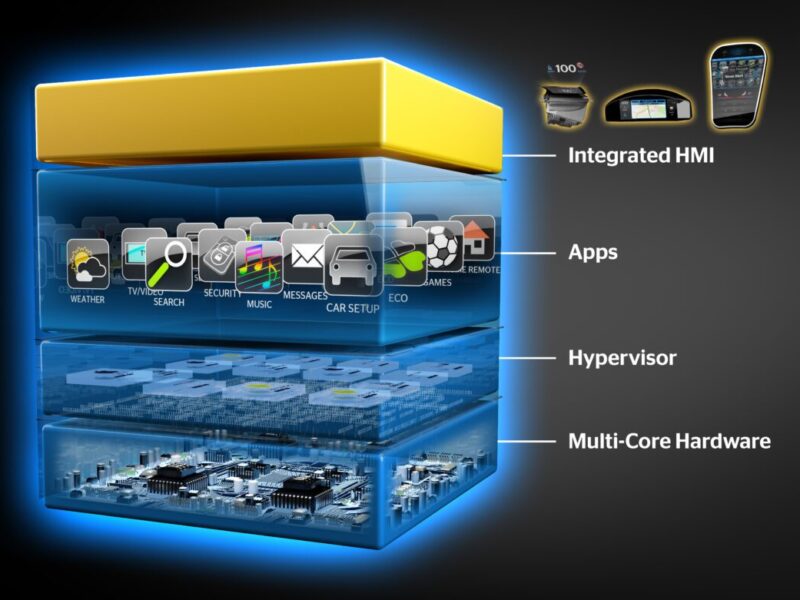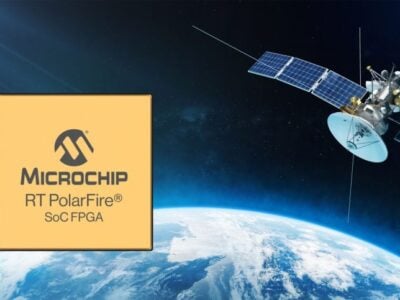
One hardware, multiple domains: virtualising is the answer
Head units are the place where many data streams in cars meet. Here is the place where multimedia meets cloud computing, safety-relevant functions meet connectivity. An obvious solution to keep such a diversity of safety levels and functions separated would be to dedicate a hardware platform to each of them – but beyond prohibitive costs, also the space requirements in the anyhow cramped car cockpit prevent such a solution. At Embedded World, automotive supplier Continental shows how such a problem can be resolved: The company designed a single common hardware platform that can run all these different applications with their unique set of requirements each, safely separated in their own virtual machine. The task of keeping these worlds apart is allocated to a hypervisor proven in aircraft systems, developed by software vendor Sysgo.
"The hypervisor technique allows us to run very different software worlds on a single hardware", says Ralf Lenninger, head of Strategy and System Development at Continental. "This makes sense since through the increasing on-board and off-board connectivity the boundaries between the diverse cockpit applications are increasingly blurring".
The platform runs Autosar software applications which need to meet high demand in terms of real-time capability, integrity and failsafe performance, such as an immobiliser or warning messages, along with Genivi-compliant infotainment applications which demand high computing power and memory space. Other applications on the same platform run in an Android environment, reflecting the needs of a digital lifestyle.
The Sysgo hypervisor partitions the hardware resources such as the computing power, memory space of a multicore processor into several virtual computers. Continental hides the complex software environment which also includes several displays under a common Human-Machine interface (HMI). The content of these applications are no longer associated to a dedicated display.

Instead, content assignment is flexible and follows situational requirements. "Depending on the driving situation, this information can be displayed in the instrument cluster, the head-up display, in the centre display or even on a connected terminal device such as a smartphone", explains Torsten Posch, manager of Continental’s Software Technology Centre.
The company’s exhibit at Embedded World demos the functional integration of a instrument cluster, a Head Unit and an Android system on a common domain controller. As a part of Sysgo’s PikeOS real-time operating system the hypervisor provides three virtual machines running on one multicore microprocessor.
Such a combination enables not only designers to run diverse applications with different safety and security requirements on a single hardware platform. At least as important as this is the possibility that it enables them to have different software life cycles coexisting on such a platform. It enables users to update dedicated software functions to keep pace with the market dynamics in the infotainment sector. The safety-reliant and long-lasting software remains unaffected.
Related articles:
Hypervisor delivers security for multicore processors, enables Multi-OS consolidation
Look before you leap: Hypervisors present new design challenges for embedded developers
OpenSynergy brings security to infotainment OS
Safer vehicles through aircraft technology
 If you enjoyed this article, you will like the following ones: don't miss them by subscribing to :
eeNews on Google News
If you enjoyed this article, you will like the following ones: don't miss them by subscribing to :
eeNews on Google News




